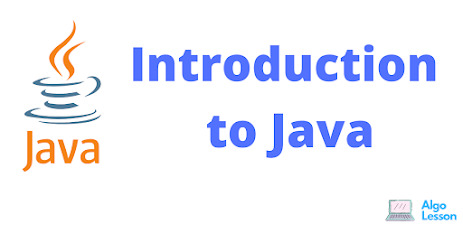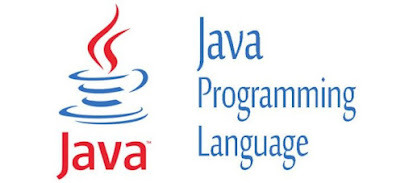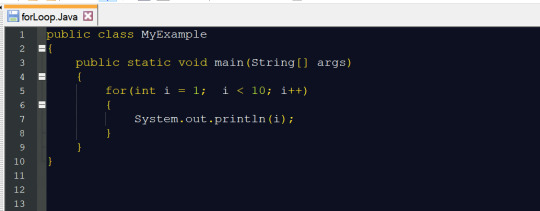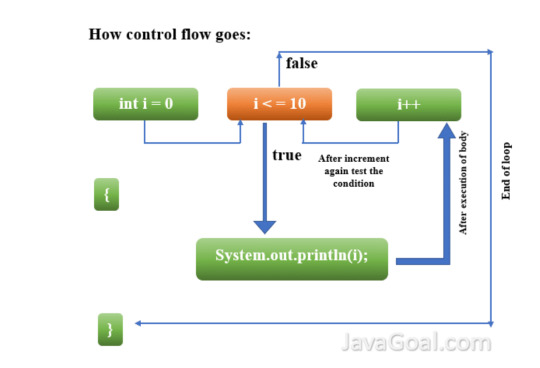#javaworld
Explore tagged Tumblr posts
Text
Sr. Java Developer
We are searching for an experienced senior Java developer polished enough to build innovative applications and software using fine coding skills!
Read the complete job description here - https://bizessence.com.au/jobs/sr-java-developer/

#bizessence#javadeveloper#hrmanager#jobopportunities#wearehiring#careeroptions#bestjobs#stepupyourcareer#salesforcehiring#jobposting#joblisting#javaworld#javacommunnity#javaprojects#javaskills
0 notes
Text
Techaircraft
📚🖥️ Dive into the World of Java! 🌟 Whether you're a beginner or leveling up your coding skills, Java remains a cornerstone of software development. From its elegant syntax to its robust capabilities, mastering Java opens doors to limitless possibilities in app development, web services, and beyond. 🌐💡 Join us on this journey of learning and discovery as we explore Java's intricacies and its role in shaping the digital landscape. 🚀💻 Let's write cleaner code, build efficient algorithms, and craft solutions that transform ideas into reality. 🌟 . 𝐖𝐞𝐛𝐬𝐢𝐭𝐞 - www.techaircraft.com
𝐓𝐞𝐜𝐡𝐚𝐢𝐫𝐜𝐫𝐚𝐟𝐭 𝐬𝐮𝐩𝐩𝐨𝐫𝐭 𝐝𝐞𝐭𝐚𝐢𝐥𝐬:
𝐌𝐨𝐛𝐢𝐥𝐞 𝐍𝐮𝐦𝐛𝐞𝐫 - 8686069898
#JavaProgramming #CodeNewbie #LearnToCode #JavaDeveloper #SoftwareEngineering #CodingLife #TechSkills #JavaLanguage #ProgrammingJourney #DeveloperCommunity #DigitalTransformation #CodeWithPurpose #JavaWorld #CodingBeginner

2 notes
·
View notes
Text
Top institutes for java training course in Chandigarh
The primary presentation about java programming before doing java training course in Chandigarh.

Java programming language is named java. why?
java is the name of an island in Indonesia where we first coffee(named java coffee) was produced. java is developed by James gosling, who is known as the father of java, in 1995. James gosling and its team members started the project in the early ' 90s. the language was initially called Oak after an oak tree that stood outside the gosling's office. Later the project went by the name green and was finally renamed java, from java coffee, a type of coffee from Indonesia.

Why do we need java programming :-
=> To communicates with digital machines and make them work accordingly.
=> Today in the programming world, we have more then 900 languages available.
=> Every language is designed to fulfill a particular kind of requirement.
=> Java is used more in these days.
=> java script use C and C++ languages.
Java programming language?
Java is a high-level, class-based, object-oriented programming language that is designed to have as few implementationsatellite as possible. java applications are typically compiled to byte code that can run on any java virtual machine regardless of the underlying computer architecture.it is most popular programming language in the world. it is source and free, java works on different platforms like windows, mac, Linx, pi etc. java is an lowering development costs, object oriented language which gives a clear structure to program and allow code to be reused, as java is close to C++ and C.

History of java:-
the history of java is very interesting. java was originally designed for interactive television, but it was too advance technology for the digital cable television industry at the time. the history of java starts with green team.java is most popular programming languages used by software developers in the early 1990s by James gosling as an object-oriented programming language. over the years, the language has been the foundation of millions of applications across many platforms such as windows, UNIX, android-based handheld devices, java operates on more then 3 billions smartphones, according to oracle. in this article, we are going to explore the history of java and the philosophy behind it.
Now I'll tell you about the best institutes for java training course in Chandigarh:-
There are many institutes for java training course in Chandigarh and one of them is excellence technology.
1. Excellence Technology :- Excellence Technology is one of the top reputed ISO 9001:2015 certified software development company in Chandigarh and Mohali. we develop mobile application, games, and websites. we provide best industrial training in Chandīgarh and Mohali. we work on PHP, web designing networking and software testing. excellence technology, Chandigarh offers best digital marketing training course in Chandigarh. basically it use for those students who have less interest in programming or coding can make up their career in digital marketing. we provide best digital marketing training in Chandigarh. Excellence technology also provides you the graphics designing training in Chandigarh. graphic designing is an technique but with occasion. using graphic designing we can create logo, pamphlets, advertisements, brochures, magazines and many other creative design. using lines, shapes, colors, curves we create many creative designs.

Extech Digital :-
Extech digital is ISO 9001:2015 certified company based in Mohali. we provide services like web hosting , web development, mobile application. SEO,SMO, SMM, PPC, ADSENSE, AdWords, ORM, Affiliate marketing, Amazon eBay product listing, content marketing, payment gateway integration, Organization Enterprise Solutions, Extech Digital provides services globally and in India by understanding client goal and needs, thus creating a better online presence for customers.

About Author :-
Kanika Dhiman is a content writer. She is graduated in BCA (Bachelor in Computer Application) and Digital Marketing. Kanika also write a content on java programming language. She consistently produces engaging and educational content that is beneficial to everyone in the marketing industry and educational field. She is one of the best content writer. She has the art of delivering valuable content, believing in quality over quantity.
#JavaTraining#java#JavaScript#javadeveloper#Java Programming#javascripts#JavaScript Libraries#javaprofesional#javajavajava#javalovers#javacoding#javaflush#javascript30#javafresh#javaskrip#javazombie#javaworld#javaphoto#javaprogram#javaPlatform#javaclassic#javacodin#javafurniture… See all
0 notes
Photo

When you’re sick and your best friend stops by with coffee! #mybestfreindisbetterthanyours #javaworld https://www.instagram.com/p/BtYuEbtH6o_/?utm_source=ig_tumblr_share&igshid=sr9uyj3pcqll
0 notes
Text
Read the answer: https://javagoal.com/cloning-in-java/#7

#coding#software#code#programmer humor#geek#software engineering#programmer#programming#academia#teaching#javagoal javablog#javaworld#javaprogramming#java#javafor
0 notes
Text
Fuel PHP Interview Questions
If you are new to the PHP framework Fuel then the best way to see what it's all about is to read through our Documentation and have a look at our Screencasts.
Any open-source project, especially a framework, requires great documentation and many have failed to achieve this. We feel that our documentation covers the API (Classes, Methods, etc) and we have a few guides but there can always be more. If you'd like to help us contribute then please write up anything you learn as a guide and submit it to us.

Ques; What is FuelPHP?
Ans; The Fuel PHP Framework is a fast, simple and flexible PHP 5.4+ framework, born from the best ideas of other frameworks, with a fresh start!
Ques; What is the current Stable version of FuelPHP
Ans; Long overdue, we have finally managed to release the latest incarnation of the Fuel PHP framework, version 1.8. Besides the usual improvements, bug fixes, and new functionality, one feature is important to mention straight away.
Ques; What is fuelphp orm?
Ans; Orm is short for Object Relational Mapper which does 2 things: it maps your database table rows to objects, and it allows you to establish relations between those objects. It follows the Active Record Pattern closely but was also influenced by other systems.
Ques; What is the HMVC pattern?
Ans; Hierarchical model–view–controller (HMVC) is a software architectural pattern, a variation of model–view–controller (MVC) similar to presentation–abstraction–control (PAC), that was published in 2000 in an article in JavaWorld Magazine, the authors apparently unaware of PAC, which was published 13 years earlier.
Ques; What is the difference between MVC and HMVC?
Ans; HMVC, Hierarchical Model View Controller is a variation of MVC pattern that targeted at solving the salability problems within the applications that used MVC. ... The Codeigniter HMVC architectural pattern solves scalability issues seen in MVC pattern.
Ques; What is Presenter and how we can create Presenter in the FuelPHP Framework?
Ans; A Presenter is a class that contains the logic that is needed to generate your view (or views). When the controller is done with your user input and is done with whatever actions it needed to take, it turns execution over to the Presenter to retrieve and process whatever data is needed for the view.
Ques; Explain the types of controllers in FuelPHP?
Ans; Controllers are classes that can be reached through the URL and take care of handling the request. A controller calls models and other classes to fetch the information. Finally, it will pass everything to a view for output. If a URL like www.yoursite.com/example/index is requested, the first segment ("example") will be the controller that is called and the second segment ("index") will be the method of that controller that is called.
Also read: Best Fuelphp interview question and answer
Online Interview Question
Fuel PHP interview questions
1 note
·
View note
Link
世界中で広く使用されるオブジェクト指向プログラミング言語Java。日本におけるこの言語の普及に、とても重要な役割を果たしたのが鈴木雄介さんです。鈴木さんは20年以上前からJavaに触れ、プログラミングだけではなく執筆・講演などの活動も精力的に行ってきました。 また、2007年に設立された日本Javaユーザグループ(Japan Java User Group:JJUG)に当初から在籍し、2012年4月から2019年3月までは会長を、2019年4月からJJUG CCC運営委員長を務めています。 なぜ鈴木さんはJavaに大きな魅力を感じているのでしょうか。そして、さまざまな普及活動を続ける過程で見えてきたものとは。Javaとともに歩んだ20年をふり返っていただきました。 *…取材はリモートにて実施しました。 Javaをテキストエディタで書くのが当たり前だった時代 ──鈴木さんはいつごろJavaと出会われたのでしょうか? 最初に触れたのは2000年くらいで、社会人として働き始めてから数年が経ったころでした。業務でECサイトの開発が決まり、プログラミング言語としてJavaを使う方針になりました。当時はLinux上で動くWebサービスを開発するならば、Javaは主流でしたから順当な選択だったと思います。 ──2000年ごろにJavaが主流だったのは、どのような要因からですか? それ以前は、エンタープライズ向けのシステムはサーバがUNIX機やホストコンピューター、クライアントがWindows OSのネイティブアプリケーションが主流でした。 しかし、インターネットが普及して世の中でブラウザを利用したウェブアプリケーションが広まると、企業内システムでも利用されるようになっていきます。そこで一気に普及したのがLinux+Javaという組み合わせでした。 Javaはエンタープライズの用途に耐えうる静的型付言語であり、言語のライセンスも無料。優れたサーブレットコンテナであるApache Tomcatも無料で使えたことが大きく、Linux+Javaという構成のシステムが多くの企業で使われるようになったんです。 私が2000年ごろに初めてJavaのコーディングをした当時は、IDE(Integrated Development Environment:統合開発環境)を使いたければ商用製品を購入するしかなくて。商用製品を用いないならば、ソースコードをテキストエディタで書いて、javacコマンドでコンパイルするのが当たり前の時代でした。 ──若い方々にはIDEを使わないJavaコーディングは想像もつかないかもしれません。 Eclipse IDEの登場が2001年で、急速に普及したのは2002年くらいからでした。それ以前は、Javaをテキストエディタで書くのもそんなに珍しくはなかったんですよ。 リモート取材中の鈴木さん 何かの技術を褒めるために、別の技術を貶めてはいけない ──鈴木さんは2000年代前半から、ブログや雑誌の寄稿でJavaの記事を書かれていたそうですね。 記事執筆を始めるきっかけになったのは、2004年に仕事でベトナム出張に行ったことです。当時のベトナムはドイモイ政策*による急激な経済成長をしており、伸び盛りの時期。IT関係の仕事に従事するのがお金持ちになる近道でもあったため、優秀な若手がどんどんエンジニアになっていました。そんな政策の渦中なので人々がみんな元気なんですよね。 *…1986年のベトナム共産党第6回党大会で提起されたスローガンで、主に経済、社会思想面において新方向への転換を目指す政策。 出張先でベトナムのエンジニアと交流して、一緒に働いたり遊んだりするなかで、彼らの熱気に影響を受けたんですよ。すごいエネルギーだなと思いました。日本に戻ってきてから「自分も何か世の中にためにできることはないか」と考えて、情報発信のためにブログを書こうと思ったんです。 前提として、先ほど話題にしたECサイト構築のプロジェクトでは、Apache TomcatやJavaVMの内部的な挙動などを、メーカーやベンダーなどに頼らず自分たちで調査していました。その後も、私は余暇の時間などでOSSのコードを読んで、どんなつくりになっているかをよく調べていたんです。 JavaフレームワークであるStrutsのコードを読んで参考にしながら、より拡張性に優れた自前のフレームワークをつくったりもしましたね。そのためJava関連の知識はかなり豊富になっており、自分の学んできたことをテーマに記事を執筆していました。 そんなある日『JavaWorld*』という雑誌の編集者からメールを頂いたんですよ。「O/Rマッピングが主流になってきていますので、この特徴の紹介やオープンソースソフトウェア(以下、OSS)製品の比較をしたいと考えています。鈴木さんにぜひ記事を書いていただけないでしょうか」という趣旨のものでした。びっくりですよね。しかも20ページも書いてほしいという話でした。 *…2001年12月号から2007年2月号まで、約5年にわたり発刊されたJavaの専門誌。 「いや、私は雑誌に寄稿したことなんてないから、無理ですよ」と返したら「ブログを拝見させて頂いています。文章力があるのはわかっているので大丈夫です」という、よくわからない説得をされました(笑)。さすがに自分ひとりで書くのは不安が大きかったので、知り合いのエンジニアと一緒に書くことにしましたけどね。ありがたいことに、執筆した記事を編集者が褒めてくれて、定期的にさまざまな記事を『JavaWorld』に寄稿させていただくようになりました。 寄稿を続けるうちに、イベントに呼ばれたりして、Javaの開発元であったSun Microsystemsの人にも会うようになります。その際に「今後、大きなイベントが開催されるので、登壇者の公募があるから応募してみたら」と言われました。それが2005年11月に開催されたJavaOne Tokyo 2005というイベントです。そこで知り合い3人と一緒に登壇したのが、初登壇になりました。 ──執筆や登壇などの活動を通じて身についた考え方はあるでしょうか? 私の中で印象に残っているのは、2006年に開催されたDeveloper Summit 2006で、初めて単独の登壇者として呼んでいただいたときのことです。登壇では、ある技術と別の技術を比較するような形で、ソフトウェアアーキテクチャについての解説をしました。 登壇前に、あるメディア関係者に私のつくった資料をレビューしてもらったんですよ。すると「この資料はすごく良いけれど、○○○という技術を貶めて書く必要はないんじゃない? 特定の技術は何かの目的を達成するためにつくられるものだから、必ず向き・不向きがある。比較するのは構わないけれど、こっちが良くてこっちがダメだみたいな書き方は良くないよ」と言っていただきました。 私は今でもその方にすごく感謝していますし、現在の仕事にもこの考え方は活きています。すべての技術には生まれた理由がある。ある技術が特定の問題を解決するのに向いていないことを非難すべきではないという考え方が、そのとき身につきました。 ある技術が大好きな人は、すべてをその技術で解決したくなってしまうんですよ。金槌を持つと人間はなんでも釘に見えてきて、解決できないことでもその道具で解決したくなってしまいます。ですが、その技術が向く領域と向かない領域は何なのかを、技術者は冷静に考えなければいけません。 日本Javaユーザグループの停滞と再生を経験して ──鈴木さんは日本Javaユーザグループの創立初期からのメンバーでもあります。どのような経緯でグループは設立に至ったのでしょうか? 時代背景からお話しすると、2005年から2011年くらいまではJavaの停滞期でした。当時、Sun Microsystemsは経営難に陥っており、その影響でJavaの開発もかなり滞っていたんです。 2006年にリリースされたJava SE 6では目立った新機能の追加がありませんでした。さらに、次のJava SE7が登場したのは2011年。Java SE6がリリースされてからJava SE7が出るまで5年もかかっているんです。 こういった事情もあり���日本でもJavaの勢いがだいぶ弱まっていました。このままではいけない。コミュニティをつくってJavaをもう一度日本で盛り上げようと始まったのが日本Javaユーザグループでした。 日本Javaユーザグループ設立記念講演会の様子。撮影は櫻庭祐一さん。 ──グループ設立の背景には、Java関係者の熱い思いがあったのですね。 とはいえ、日本Javaユーザグループの活動自体も徐々に停滞期を迎えていきました。頑張って盛り上げようとしていたものの、前述の理由からJavaの進化が止まっていたため、レガシー感が否めなくなっていたんです。世の中のエンジニアたちがJavaに寄せる関心も薄れていました。ユーザーグループのイベントにもあまり人が来ない状態になっていましたね。 ──そんな大変な状況のなか、2012年4月から鈴木さんは会長に就任されます。 「鈴木さんが会長になって組織として若返りを行い、もう一度Javaコミュニティを盛り上げ直したら?」というお声をさまざまな人々から頂いたんです。初代会長である丸山不二夫さんは当時すでに還暦を超えられていて、一方の私はその頃30台でした。Javaコミュニティの現状をなんとか変えたいと思っていましたし、いい機会だなと考えて、2012年に私が会長に就任しました。 会長になってからは、イベント運営の方法を抜本的に変えていきました。当時の日本Javaユーザグループは、イベントの直前にバタバタと知り合いに声をかけて、登壇者が集まらなければ開催をスキップするといった牧歌的な運営がなされていたんです。しかし、きちんと毎月開催して、かつ質の高いイベントになるように方針を徹底していきました。 さらに、日本最大のJavaコミュニティイベントであるJJUG CCCは年2回やっていましたが、コンテンツを公募するようにして、コミュニティ内での流行を取り入れるようにしました。正直、大規模イベントを年に2回も実施するのはかなり大変なんですけど(笑)。それでも、コミュニティを盛り上げたい一心で改善を続けていったんです。 コミュニティの幹事メンバーも大幅に変えていきました。私が会長に就任したばかりの頃は、グループの幹事のなかには、活動にあまり積極的に参加されない方も混じっていました。ですが、実績が1年間ない方にはご退任いただき、よりモチベーションや情報感度の高い若手のメンバーを幹事として積極的に起用していったんです。 ──大幅な改善を進めたのですね。 「どんな企業をイベントのスポンサーにするか」も変えていきました。かつては、イベントのスポンサーはJavaの関連技術を“売っている企業”が主でした。しかし、そういった企業は基本的に自分たちが販売したい技術の話をしますから、なかなか参加者にとって面白いセッションにはなりません。セールストークを聞きたい人はいないですからね。 そこで、Javaを“使っている企業”をスポンサーにし、所属するエンジニアがJavaを活用してどんなに素晴らしい仕事をしているのかを発信してもらう方針に変えました。エンジニアは、魅力的なエンジニアに惹かれますから。 その結果、イベントの参加者やスポンサーの数も、右肩上がりに増えていきました。もちろんコミュニティの成長には、2010年にOracleによりSun Microsystemsが買収されてから、Javaの改善が円滑に行われるようになったことも影響していると思いますけどね。 鈴木さん作成のJJUG CCC 2016 Spring基調講演資料「JJUG運営の戦略と戦術」より抜粋。 ──Javaの停滞期を経験された時代に、他の言語に主軸を移すのではなく、Javaを信じ続けられたのはなぜでしょうか? 確かにJava本体は停滞期だったのですが、Java関連のコミュニティやOSSは進化を続けていたので、不安は全くなかったです。むしろ、この時代は本家の動きが悪かったからこそ、さまざまな方が行動を起こし、Javaに関連する次のスタンダードをつくろうと尽力されていました。 これは読者の方々に伝えたいことなのですが、技術の使い方や特徴といった表��的な情報だけではなく、技術のつくり手やコミュニティの動きを追っておくと、その技術の動向がよくわかります。 ──技術の“生態系”を学ばなければいけないのですね。 そうですね。必ずしも、優れた技術が長く使える技術になるわけではありません。特に注意が必要なのは、単一の企業が特定技術のつくり手になっているようなケースです。「○○社がメンテナンスしているから大丈夫だろう」という考え方をしない方がいいですね。 企業がOSSを出すのにはさまざまな理由があります。「広く使ってもらいたいから公開する」という場合もあれば、「社内で保守するのが辛いからOSSにする」「流行に乗り遅れないようにとりあえず出す」「コミュニティの反応を確認したい」という場合も。コミュニティの意思が反映されず、その企業の意思決定によって急にOSSの方向転換が行われたり、更新されずに放置されたりというパターンも多いです。 Javaを学べば世界の技術トレンドがわかる ──エンジニアがJavaを学ぶ意義について教えてください。 Javaの素晴らしさはJVM(Java仮想マシン)の性能の良さやエコシステムの豊かさにあると思います。エコシステムとはJavaを取り巻く環境やコミュニティといった意味で、これまでさまざまな企業や人々がJavaに対して貢献してきました。OSSの世界におけるものごとの考え方やコミュニティ運営における方法論は、Javaが歩んできたカルチャーが色濃く影響していると私は考えています。 現在も、多くの企業や人々がJavaの進化を支えています。たとえば、JDK 15の開発には錚々(そうそう)たる企業が参加しています。エンジニアなら誰しも憧れるような有名企業がJavaのエコシステムに関わっているんです。 <JDK 15の開発に参加している企業> Oracle、Red Hat、SAP、ARM、Tencent、NTT Data、Amazon、IBM、 Intel、Alibaba、Loongson、Huawei、BellSoft、Ampere Computing、 Google、JetBrains、Azul、DataDog、Microsoft、他多数。 日本ではJavaがレガシーというイメージが強いですが、実は世界的に見れば全くレガシーではありません。Javaの進化を見れば、世界のIT企業各社が何を目指しているかがわかります。このエコシステムの素晴らしさを、もっと多くの方々に知っていただけると嬉しいですね。 ──Javaという言語の偉大さを感じます。では最後に、鈴木さんがキャリアのなかでJavaと携わった意義について教えてください。 キャリアの大半で得られたこと、特にコミュニティで得られた経験のほとんどはJavaが関係しているので、自分とJavaとは切っても切り離せないですね。現在の私はITアーキテクトとしての仕事が主でコードを日常的に書くということはしませんが、今でもJavaのことを勉強するとITの世界の未来がわかります。 先ほどの話にもあったように世界中のトップエンジニアたちがJavaに携わっているわけですから、Javaのリリースロードマップを見れば世界的なITのトレンドがわかる。こんなにわかりやすいものはないですよね。 取材・執筆:中薗昴
0 notes
Text
Sr. Java Developer
Our company is seeking a Senior Java Developer who can lead teams and collaborate with stakeholders to deliver high-quality software solutions. If you have a deep understanding of Java and are ready to take on a new role, we want you to join our team. Job Description - https://bizessence.com.au/jobs/sr-java-developer/

#bizessence#javadeveloper#hrmanager#jobopportunities#wearehiring#careeroptions#bestjobs#stepupyourcareer#salesforcehiring#jobposting#joblisting#javaworld#javacommunnity#javaprojects#javaskills
0 notes
Link
#JavaWorld #Java #Automated | Tutorial: Continuous integration with Jenkins https://t.co/wj9ne2zUga
— Yohan J. Rodríguez (@hasdid) December 31, 2019
via: https://ift.tt/1GAs5mb
0 notes
Photo

Not able to publish my Java articles in Javaworld, Javacodegeeks, serverside; Anybody please advise me how to publish the articles at those sites... https://www.reddit.com/r/SEO/comments/btl0c7/not_able_to_publish_my_java_articles_in_javaworld/
I am not able to publish my Java articles in Javaworld, Javacodegeeks, serverside; but my articles are get approved and published at devx and jaxenter, Any body could you please advise me what could be the reason behind it?
submitted by /u/suryarose [link] [comments] May 27, 2019 at 05:10PM
0 notes
Text
for loop in java
For more detail visit on JavaGoal.com
The for loop in java is a part of Control statements. If a user wants to execute the block of code several times. It means the number of iterations is fixed. Then you should use the for loop java. JAVA provides a concise way of writing the loop structure. It consists of four parts: 1. Initialization 2. Condition 3. Body of for loop 4. Increment/decrement

1. Initialization: Initialization is the first part of the loop and it happens only one time. It marks the start point of the loop. Here, you can declare and initialize the variable, or you can use any already initialized variable. 2. Condition: Condition is the second part of the loop and we must provide/write a condition that must return boolean value either true or false. It is executed each time to test the condition of the loop. It continues execution until the condition is false.
3. Body of for loop: It contains a block of code that executes each time after evaluating the condition true. 4. Increment/decrement: It is used to update the index value of the variable.


For more detail visit on JavaGoal.com
#java#javafor#javaprogramming#coding#javaworld#javagoal javablog#javaprogrammer#javaCode#programmer#programming#python#laptop#computer#computer science#stem#software engineering#software#code#programmer humor#geek#nerd
2 notes
·
View notes
Text
Tweeted
New Post!!! https://t.co/18327PLEZY via /r/SEO I am not able to publish my Java articles in Javaworld, Javacodegeeks, serverside; but my articles are get approved and published at devx and jaxenter, Any body could you please advise me what could be the … https://t.co/jHWwYGp95j
— Bobs SEO (@bobsseolasvegas) May 28, 2019
Content by By www.bobsseo.net
0 notes
Text
The Good and the Bad of Java Programming
There are not many technologies that can brag about staying relevant for more than 20 years. But this year, Java was voted the 5th most popular technology, eclipsed only by undisputed leaders JavaScript, HTML, CSS, and SQL. While it’s 18th on the list of most loved in the same StackOverflow survey, it’s also down the list in its most-dreaded ranking. Today, we unravel the many successes and challenges of Java — the time-honored technology with the iconic steaming cup-of-coffee logo, a language near and dear to many programmers' hearts.
What Is Java Programming: History and Impact
Java is a general-purpose programming language that follows the object-oriented programming paradigm and the "Write Once, Run Anywhere" approach. Java is used for desktop, web, mobile, and enterprise applications. You can out find out more about it here:
Java downloads
Java documentation
Oracle Java community
JavaWorld — popular portal for all things Java
JavaRanch — forums for Java developers
Java is not only a language but an ecosystem of tools covering almost everything you may need for Java development. This includes:
Java Development Kit (JDK) – with that and a standard Notebook app, you can write and run/compile Java code.
Java Runtime Environment (JRE) — this is a software distribution tool containing a stand-alone Java Virtual Machine, the Java standard library (Java Class Library), and a configuration tool.
Integrated Development Environment (IDE) — this is a set of tools that help you run, edit, and compile your code. IntelliJ IDEA, Eclipse, and NetBeans are the most popular amongst them.
Java can be found anywhere you look. It’s the primary language for Android development. You will find it in web applications, governmental websites, and big data technologies, such as Hadoop and Apache Storm. And, it’s also a classic choice for scientific projects, especially natural language processing. Java was dominating mobile even in pre-smartphone days. The first mobile games in the early 2000s were mostly made in Java. So, it’s fair to say that Java, thanks to its long history, has earned its place in the Programming Hall of Fame. TIOBE index, one of the most reputable programming rankings in the world, uses search engine results for calculation. Despite the growing popularity of Go and Python, Java has remained at the top of the list for more than a decade.
TIOBE Index data as of August, 2018
It all started in the early 1990s, when the Sun Microsystems team began developing a better version of C++ that was easily portable, novice-friendly, and enabled with automated memory management. The research resulted in the creation of an altogether new language, and the name was picked from dozens of others yelled out in the meeting room. Today, the logo of a steaming coffee cup is the silent, universally recognizable symbol of programming. And, it’s no longer clear what came first — the programmers’ obsession with caffeine or associations with Java, which are now synonymous with coffee.
the evolution of java logosThese are just some of the changes Java introduced to the programming world:
Flexibility. Java proved that C’s procedural, manually-allocated, and platform-dependent code wasn’t the be-all and end-all. Thanks to Java, more people started adopting object-oriented programming, a commonly-accepted method today.
Applets. In the years before JavaScript, Java introduced applets, small web programs that provided interactive elements, especially useful for visualization and teaching. Although they were never used for anything more than simple animations, it’s what captured the attention of many programmers and paved the road for the development of HTML5, Flash, and, of course, JavaScript.
Test-driven development. With Java, TDD was no longer an experimental practice, but the standard way to develop software. The introduction of JUnit in 2000 is considered one of Java’s biggest contributions.
Benefits of Programming in Java
Though no longer the only officially supported language for Android development and, of course, far from the only choice for web programming, Java keeps pace with the alternatives. And, since that’s not only thanks to its respectable age, let’s explore some of the advantages Java has to offer.
Object-Oriented Programming
Java embraces object-oriented programming (OOP), a coding concept in which you not only define the type of data and its structure, but also the set of functions applied to it. This way, your data structure becomes an object that can now be manipulated to create relationships between different objects.
In contrast to another approach — procedural programming — where you have to follow a sequence of instructions using variables and functions, OOP allows you to group these variables and functions by context, thus, labeling them and referring to functions in the context of each specific object.
Comparing procedural programming and object-oriented programming
Why Is OOP an Advantage?
You can easily reuse objects in other programs
It prevents errors by having objects hide some information that shouldn’t be easily accessed
It makes programs more organized and pre-planned, even the bigger ones
It offers simple maintenance and legacy code modernization
High-Level Language With Simple Syntax and a Mild Learning Curve
Java is a high-level language, meaning that it closely resembles the human language. In contrast to low-level languages that resemble machine code, high-level languages have to be converted using compilers or interpreters. This simplifies development, making the language easier to write, read, and maintain.
Writing Hello World in Java
Java derived its syntax (set of rules and structure used by programmers) from C++, which is why you will notice that it closely resembles C code. However, it’s much simpler, allowing beginners to learn the technology faster and code more effectively to achieve specific results.
Java may not be as beginner-friendly as Python, but any developer with a basic understanding of frameworks, packages, classes, and objects can grasp it pretty soon. It’s straightforward, strongly-typed, and has very strict expectations that soon help guide your thinking in the right direction. Besides, tons of free online tutorials and courses won’t keep a novice helpless.
Standard for Enterprise Computing
Enterprise applications are Java’s greatest asset. It started back in the 90s when organizations began looking for robust programming tools that weren’t C. Java supports a plethora of libraries, which are the building blocks of any enterprise system, that help developers create any function a company may need. The vast talent pool also helps. Java is a language used as an introduction to computer programming in most schools and universities. Besides, its integration capabilities are impressive, as most of the hosting providers support Java. Last but not least, Java is comparatively cheap to maintain, since you don’t have to depend on a specific hardware infrastructure and can run your servers on any type of machine you may have.
Shortage of Security Risks
You may encounter the notion that Java is a secure language, but that’s not entirely true. The language itself doesn��t protect you from vulnerabilities, but some of its features can save you from common security flaws. First, compared to C, Java doesn’t have pointers. A pointer is an object that stores the memory address of another value that can cause unauthorized access to memory. Second, it has a Security Manager, a security policy created for each application where you can specify access rules. This allows you to run Java applications in a “sandbox,” eliminating risks of harm.
Platform-Independency (Write Once, Run Anywhere)
Write Once Run Anywhere (WORA) is a popular programming catchphrase introduced by Sun Microsystems to describe Java’s cross-platform capabilities. It meant you could create a Java program on, let’s say, Windows, compile it to bytecode, and run the application on any other platform that supports a Java Virtual Machine (JVM). In this case, a JVM serves as an abstraction level between the code and the hardware.
How WORA approach works in Java
All major operating systems, including Windows, Mac OS, and Linux, support the JVM. And, unless you’re writing a program that relies mostly on platform-specific features and UI, you can share — maybe not all — a big chunk of bytecode.
Distributed Language for Easy Remote Collaboration
Java was designed as a distributed language meaning that it has an integrated mechanism for sharing data and programs among multiple computers for improved performance and efficiency.
Distributed computing vs parallel computing
Unlike other languages, where you have to use external APIs for distribution, Java offers this technology at its core. Java-specific methodology for distributed computing is called Remote Method Invocation (RMI). Using RMI allows you to bring all Java benefits, such as security, platform-independence, and object-oriented programming, to distributed computing. Apart from that, it also supports Socket Programming and the distribution methodology of CORBA for sharing objects between programs written in different languages.
Automatic Memory Management
Java developers don’t have to worry about manually writing code for memory management tasks, thanks to automatic memory management (AMM), also used in the Swift programming language, and garbage collection, an application that automatically handles allocation and deallocation of memory. What exactly does it mean?
A program’s effectiveness is directly linked to memory. And, memory is limited. By using languages with manual management, developers risk forgetting to allocate memory, resulting in increased memory footprint and lagging. A garbage collector can locate objects that are no longer referenced by your program and remove them. Despite the fact that it affects your program’s CPU, you can reduce or prevent it with smart optimization and tuning.
Multithreading
In programming, a thread is the smallest unit of processing. To maximize utilization of CPU time, Java allows you to run these threads simultaneously — in a process called multithreading.
Threads share the same memory area, so switching between them takes little time. They are also independent, so if one thread faces exception, it doesn’t affect other threads. This is especially useful for gaming and animation-heavy programs.
multithreading
Stability and Massive Community
Java has survived to a respectable age, thanks to the community, Oracle’s support, and the cornucopia of applications and languages that keep running on JVM. Besides, new versions of Java are regularly released with new, interesting features.
Java’s developer community is also unmatched. About 45 percent of StackOverflow 2018 survey respondents use Java. It has an extremely large ecosystem of well-tested libraries and frameworks for any use case. Java is most likely to be one of the first languages beginning developers encounter in their studies, as there are 1000+ Java-related courses on Udemy and 300+ on Coursera.
Drawbacks of Programming in Java
Here are the cons you want to know before writing your next project in Java.
Paid Commercial LicenseOracle recently announced that they will start charging Java SE 8 for “business, commercial, or production” use starting in 2019. To get all new updates and bug fixes, you’ll need to pay by the number of users or per processor.
Today, the current version of Java is free and available for redistribution for general purpose computing. To prepare for the change, each company has to evaluate how much of Java they use and seek an alternative technology if the price upgrade promises to be too painful.
Poor Performance
Any high-level language has to deal with poor performance due to the compilation and abstraction level of a virtual machine. However, it’s not the only reason for Java’s often criticized speed. Take garbage collector, a useful feature that unfortunately can lead to significant performance problems if it takes more than 20 percent of CPU time. Bad caching configuration can also cause excessive memory and garbage collection usage. There are also thread deadlocks that happen when several threads are trying to access the same resource, and — every Java developer’s nightmare — out-of-memory errors. Although each of these problems can be prevented with skillful planning, they do add up and can cause different volumes of damage.
Far From a Native Look and Feel on the Desktop
To create a program’s graphical user interface (GUI), developers use different language-specific tools. Thus, for Android apps, there’s Android Studio that helps create apps that look and feel native. However, when it comes to desktop UI, Java noticeably lacks.
There are a few GUI builders Java programmers can choose from: Swing, SWT, JavaFX, JSF being the most popular. Swing is an old-but-reliable, cross-platform, and already-integrated GUI builder with various Java IDEs, including Eclipse and NetBeans. But, unless you’re using templates, you’ll notice interface inconsistencies. SWT uses native components, but it’s not suitable for complicated UI. JavaFX is clean and modern-looking, but it’s not very mature. Overall, choosing a good fit for your GUI building on Java requires additional research.
Verbose and Complex Code
When the code is verbose, it means it uses too many words. While it may seem an advantage when you’re trying to understand the language, long, over-complicated sentences make code less readable and scannable. By trying to emulate English, many high-level languages tend to make too much noise. Java, created to tone down the unapproachable C++, forces programmers to type exactly what they mean, which makes the language more transparent to non-experts but, unfortunately, less compact.
If we compare Java to its rival Python, we can see how clear Python code appears — it doesn’t require semicolons and uses “and,” “or,” and “not” as operators instead of Java’s “&&,” “||,” and “!” Generally, Python has fewer bells and whistles, such as parentheses or curly braces.
Conclusion: Where Is Java Used?
Most organizations use Java in one way or another. A wide range of use cases makes these applications almost invisible, which is why the question “where to use Java” is often raised. To finish our overview, let’s see which domains can be covered by Java:
Android apps. Despite Kotlin’s invasive growth, Java is still the de facto language for Android apps, which automatically turns a big pool of Java developers into Android programmers. While Android uses Android SDK instead of JDK, the code is still written in Java.
Software products. Apart from already-mentioned Hadoop and Apache Storm, Java was used to create Eclipse, OpenOffice, Gmail, Atlassian, and more.
Finance programs. Being one of the most demanded language skills in the financial industry, Java is used both on the server- and client-side to build reliable, fast, and simple websites. It’s also a preferred language for data simulations and modeling.
Point of sale systems. Many businesses use Java to create PoS systems, as they usually require platform-independency and a vast talent pool.
Trading applications. Murex, a popular bank management program for front and back connectivity, is written in Java.
Big data programs. Hadoop is written in Java. Scala, Kafka, and Spark use JVM. Also, Java gives you access to tons of tried-and-tested libraries, debuggers, and monitoring tools.[Source]-https://dzone.com/articles/the-good-and-the-bad-of-java-programming
We provide best Java Courses in Mumbai, navi mumbai. We have industry experienced trainers and provide hands on practice. Basic to advanced modules are covered in training sessions.
#Java Classes in Vashi#Java Classes in Thane#Java Certification Course in Thane#Java Courses in Mumbai#Java Training in Mumbai
0 notes
Photo

@java : RT @RafaDelNero: Hi @Java developers! It's been some time there is no #JavaChallenges but this happened for a good reason. The new series #JavaChallengers was launched today in #JavaWorld! Master the challenges concepts and be a highly skilled @Java developer: https://t.co/81XhdLfc6o
0 notes
Text
Writing assignment
I need it today by 12pm western time
You are an intern at a large engineering-based technology firm. You’ve been asked by your supervisor, Gil Hernandez, to provide your thoughts on the following situation.
A recent article republished in JavaWorld Magazine asks the question whether software developers should have a separate code of ethics. The article can be found here: (http://www.javaworld.c…
View On WordPress
0 notes